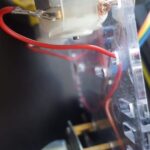After tinkering with my car today, specifically looking into throttle response adjustments to smooth out the turbo lag in my engine, it got me thinking beyond just mechanics. For those less familiar, adjusting throttle response is essentially fine-tuning how your car reacts when you press the gas pedal, making it feel more immediate. It’s all software controlled these days. This led me to a fundamental question: what programming language do cars use to run all these complex systems? It’s mind-blowing how much of a modern vehicle is governed by computers, from engine management to safety features.
After a bit of research, it turns out that C programming language is overwhelmingly the language of choice for automotive electronic control units (ECUs). This makes perfect sense when you consider the demands of embedded systems in vehicles. C is renowned for providing direct access to the hardware, which is crucial for controlling car components precisely and efficiently. Memory usage is also a critical factor in car computers, which are often resource-constrained, and C excels in its low memory footprint. Perhaps most importantly, C is incredibly fast, enabling real-time processing needed for critical functions like engine control, braking, and stability systems.
Within the automotive industry, a specific implementation of C, known as MISRA-C (Motor Industry Software Reliability Association C), is widely adopted. MISRA-C isn’t a new language, but rather a set of strict guidelines for writing C code. These guidelines are designed to prevent coding errors that could lead to unpredictable or dangerous behavior when a car is in operation. Think about it – software glitches in a car can have far more serious consequences than in a desktop application. MISRA-C enforces a disciplined and robust coding style to minimize potential risks and ensure the reliability of automotive software.
To illustrate the stringency of MISRA-C, consider this rule example: “Rule 59 (required): The statement forming the body of an “if”, “else if”, “else”, “while”, “do … while”, or “for” statement shall always be enclosed in braces.” While it might seem overly strict, this rule prevents common programming errors. Imagine the following code snippet without braces in the else clause:
if (x == 0) { y = 10; z = 0; } else y = 20; z = 1;At first glance, it might appear that z = 1; is part of the else block. However, because of the missing braces, z = 1; is executed regardless of the if condition. MISRA-C mandates braces to avoid such ambiguity and potential errors, particularly crucial in safety-critical automotive applications.
Originally developed for the automotive sector, MISRA-C has become a benchmark for best practices in embedded systems development across various industries beyond just cars. Sectors like aerospace, telecommunications, defense, and railway systems also recognize and utilize MISRA-C guidelines to enhance software reliability and safety. It’s a testament to the critical nature of robust software in modern technology, especially when lives are potentially at stake.
If you’re interested in delving deeper into the programming world of car computers, here are some resources for further exploration:
https://www.quora.com/Which-programming-language-is-used-in-the-ECU-of-a-car
https://stackoverflow.com/questions/1044271/automobile-programming-languages
http://www.embedded.com/electronics-blogs/beginner-s-corner/4023981/Introduction-to-MISRA-C
http://www.eas.uccs.edu/~mwickert/ece5655/code/MISRA/MISRA_C_key_rules.pdf

